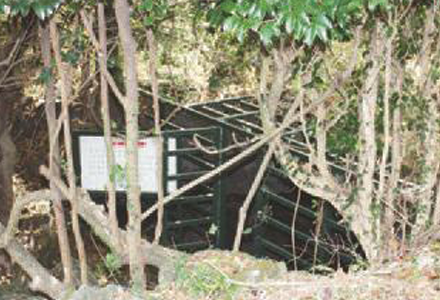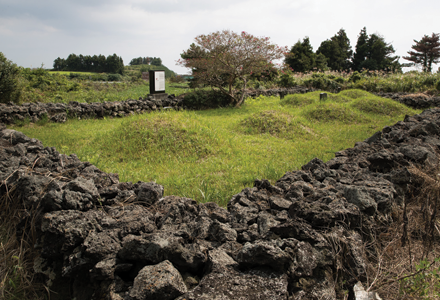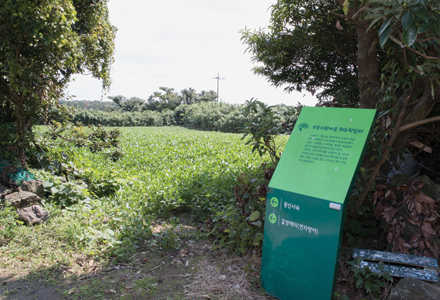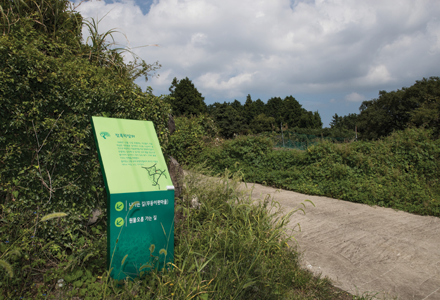Donggwang-ri village in Andeok-myeon, southwest Jeju, was a focus of attention for the US military government after it attained control over the southern half of Korea following liberation from Japan in 1945. Villagers here were unhappy with the heavy taxation system and a government official was assaulted to protest against the burden placed on locals. After the outbreak of Jeju 4·3, numerous Donggwang-ri residents were arrested and eventually executed at the coastal cliff of Jeongbang Falls. It was nearly impossible to identify the deceased as the corpses either washed away or were piled atop one another. In total, more than 160 people from Donggwang-ri were killed during the Jeju Uprising and Massacre period.


Former Sambatguseok District
This site used to be called Sambatguseok District, named for having hemp fields (Sambat in Korean) to produce clothes, rope, etc. Before Jeju 4·3, the area was populated by 46 households all surnamed Lim. However, the counterinsurgency forces’ scorched-earth operation forced the villagers to seek refuge in nearby Keunneolgwe cave or other natural shelters to avoid the carnage. That is until they were discovered and were either killed on the site of arrest or executed near Jeongbang Waterfall. The houses, neighborhood streets and vegetable gardens partly remain in this area.

Doetgwe Cave
Doetgwe cave provided residents of Donggwang Village refuge during Jeju 4·3. The 30-meter-long cave is connected to Keunneolgwe cave nearby. Utensils used by the refugees can still be found on the cave floor, vivid proof of the dire situation residents faced during Jeju 4·3. The cave was one of the filming locations of the award-winning film “Jiseul.”

Lim Moon-suk Family’s Empty Graves
When Donggwang Village residents who had been hiding in Keunneolgwe cave were discovered by the counterinsurgency forces in mid-November 1948, they scattered in all directions. In the harsh cold, most of them failed to find another hiding place and were captured only to be massacred near Jeongbang Waterfall without due process. Their bodies were either left to decompose where they were shot or were swept away into the sea. The bereaved family of Lim Moon-suk created seven empty graves (two of which were for married couples) to appease the souls of their nine missing family members.

Mudeungiwat District’s First Massacre Site
On Nov. 15, 1948, counterinsurgency forces raided Donggwang Village. The residents who had remained in the village’s Mudeungiwat District for having been ill-informed of the eviction order were forced to gather in the site pictured. Ten people were selected at random and beaten to the extent that their limbs were broken. The less injured escaped while the rest were shot to death.

Ambush and Massacre Site
On Dec. 12, 1948, counterinsurgency forces hiding in ambush on the site pictured in Mudeungiwat District cornered more than 10 members of Kim Du-baek’s family and covered them with straw mats that were then set on fire, burning them alive. The victims screamed in flames, most of whom were women, the elderly and children.